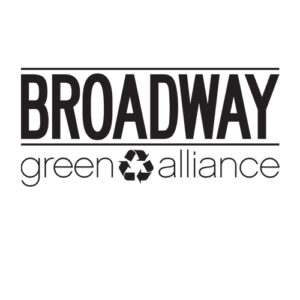
There are different ways of getting to work for your production that can have a positive environmental impact as well as improving the health of your cast and crew.
By encouraging your cast and crew to walk or bike to work, your production can help reduce traffic congestion and air pollution, which benefits the environment, the health of your community, and the health of theatregoers, cast, and crew members. Bicycling also helps encourage your cast and crew to lead a healthier lifestyle with additional exercise.
Tips to promote bicycling:
ADDITIONAL RESOURCES
Public transportation is often cheaper than travel by car, and increased use of buses, trains, and subways reduces the need for onsite staff or guest parking facilities. Review the ideas and resources below for more information on how encourage production and theatre staff to commute by public transportation.
Tips to encourage public transit:
Carpooling can save your employees money by reducing the amount of gas they buy and money they spend on auto-related upkeep. It also has significant environmental benefits, reducing the emission of harmful pollutants such as carbon dioxide, carbon monoxide, and volatile organic compounds. Consider the tips and resources below for information on how to increase carpooling to your production.
Carpooling tips:
Hybrid and electric vehicles can save money and reduce emissions of harmful gasses such as carbon dioxide and carbon monoxide. Consider providing preferential and/or discounted parking for cast and crew who commute in a hybrid or electric vehicle.
Also consider working with sponsors or local businesses to partner on other incentives for cast and crew who drive hybrid and electric vehicles. You may also want to consider installing electric charging stations at your venue for employees with plug-in vehicles. Even better, partner with sponsors to install solar systems to power electric-charging stations.
There are also state and federal incentives, tax credits, and insurance discounts available for hybrid drivers. Visit the Union of Concerned Scientists’ Hybrid Center and the US Department of Energy’s Fuel Efficient Vehicle Tax Incentive Information Center for a list of state and federal hybrid incentives.
For more information on environmentally preferable vehicles, visit NRDC: Grasping Green Car Technology, the U.S. EPA’s Green Vehicle Guide, and Fueleconomy.gov.
The transportation sector is one of the main sources of smog, carbon monoxide, global warming, and harmful particles that can cause respiratory illnesses and other health problems. Walking and bicycling helps reduce all of these impacts, saves money, and is a healthy way to begin and end the day. Carpooling and using public transportation reduces the total amount of cars on the road, which in turn reduces the many forms of pollution associated with the transportation sector.
In addition, many forms of public transportation use environmentally preferable fuels such as natural gas, electricity, and fuel cells. Using public transportation therefore reduces the transportation sector’s emissions of harmful compounds such as carbon dioxide, nitrogen oxides, carbon monoxide, volatile organic compounds, and particulates. This reduces emissions that can cause smog, global warming, acid rain, and negative health effects.
Energy Efficient Lighting: Green Practices in Theatre Part 1
Waste Reduction: Green Practices in Theatre Part 2


The Broadway Green Alliance (BGA) is an industry-wide initiative that educates, motivates, and inspires the entire theatre community and its patrons to implement environmentally friendlier practices on Broadway and beyond. The BGA was founded in 2008 in collaboration with the Natural Resources Defense Council. The Broadway Green Alliance is an ad hoc committee of The Broadway League and a fiscal program of Broadway Cares/Equity Fights AIDS. Along with Julie’s Bicycle in the UK, the BGA is a founding member of the International Green Theatre Alliance. The BGA has reached tens of thousands of fans through Facebook, Twitter, Instagram, YouTube, and other media. As a community of industry and environmental professionals connected by the shared goal of normalizing greening practices on Broadway and beyond, the BGA has successfully implemented significant sustainability reform at the forefront of the industry.
Read Full Profile© 2021 TheatreArtLife. All rights reserved.

Thank you so much for reading, but you have now reached your free article limit for this month.
Our contributors are currently writing more articles for you to enjoy.
To keep reading, all you have to do is become a subscriber and then you can read unlimited articles anytime.
Your investment will help us continue to ignite connections across the globe in live entertainment and build this community for industry professionals.